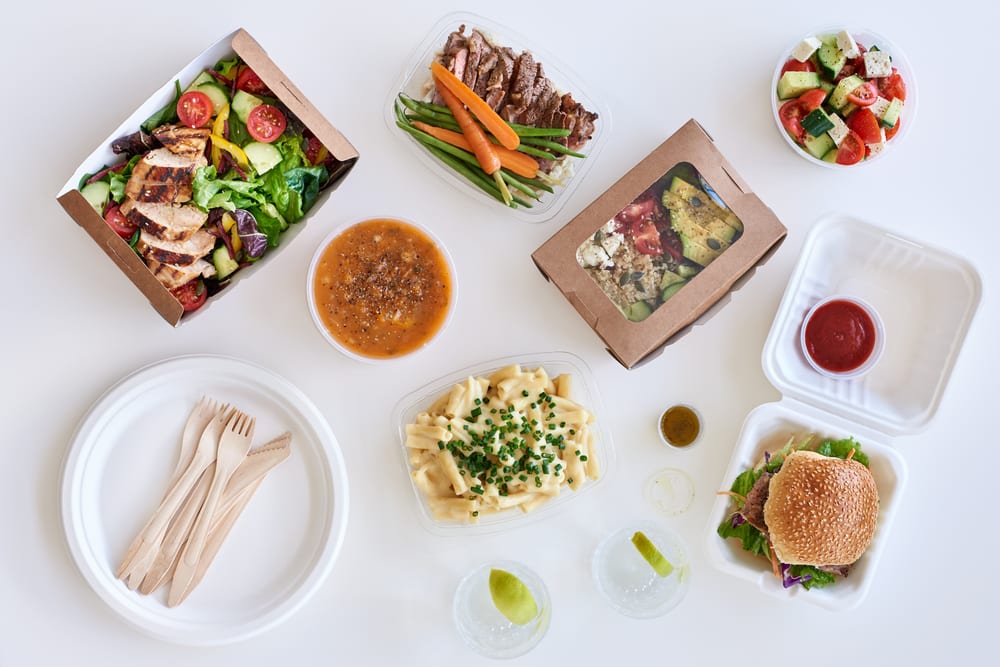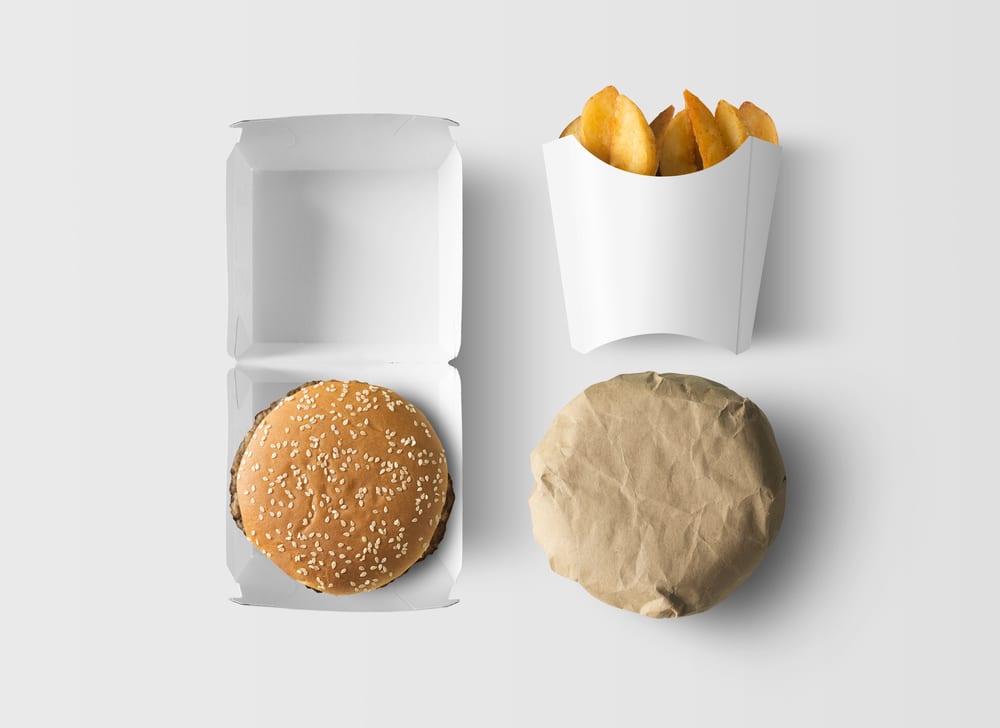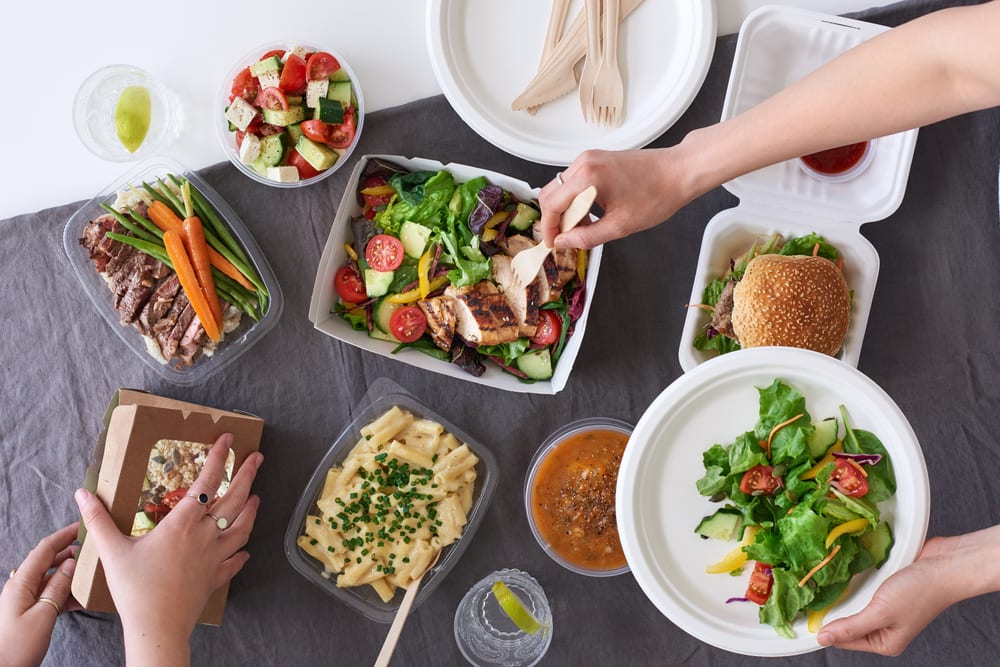This article is part of a series called “Getting Off-Premises”, which examines how to build an off-premises business.
Anyone ever tell you, “Don’t try to be something you’re not”? Apply that advice to your catering operation.
Early branding of your catering program is key to its success. Branding is the quickest way to differentiate your business. First, through the products you offer. And through the core values that make your company relatable. When your brand message is honed, you remind customers that they love your brand and want more of your products. When branding is successful, and catering operations sync with your brand identity, restaurants can carve niche markets for themselves. This is called “brand alignment.” We’ll talk more about that.
1. Two menus designed around the same good food

Too often catering menus get away from brands, becoming “off brand.” An underperforming Italian restaurant might start catering gourmet burgers because they’re popular. But confused branding could weaken your appeal to customers. If your restaurant specializes in sandwiches, soups, and salads, your catering menu should echo that. Don’t sell hot buffets or dessert spreads if those aren’t your specialties.
This practice is wise for a second reason: controlling costs. When you keep your catering menu in check, you curb inventory from spiraling out of control. When inventories for both menus (restaurant and catering) are more or less the same, this helps to reduce waste and to control food and labor costs.
When customers ask for off-the-menu items, say yes when this is doable, no if problematic. Ice cream is a great example; customers ask caterers for it all the time. Some restaurants don’t have freezers and many don’t offer ice cream on their menus. For those restaurants, adding ice cream to their catering menus presents storage and transport hassles worth avoiding. Still, if you risk losing the whole order over saying no to ice cream, reconsider how you might do it.
2. Branding with food packaging

At my office, our team orders out weekly and from a wide range of caterers. So we see all too regularly food and drink arriving in unbranded containers. That’s a huge missed opportunity to reinforce a brand message with customers.
If you can’t afford custom-branded food containers presently, at least get inexpensive stick-on labels with your logo to put on bags, boxes, drink cups, etc., until you can. Never let customers forget who brought them lunch!
3. Put one person in charge of catering
Both arms of your business—busy restaurant and flourishing catering program—require a person’s full attention, so assign each side dedicated leaders. Much as an owner might believe she can manage the restaurant and catering operation simultaneously, it’s just not possible to run both and yield solid growth.
If you choose someone on your staff to run catering, select someone who’s naturally hospitable to guests, eager to accept new challenges, calm under pressure, organized, a team player and a team builder.
If you hire an outsider, ensure the candidate can bring extensive catering experience to your organization. This new manager’s personality must be a good fit for your restaurant culture. You’re looking for a collaborator and a team builder. Someone who stomps on toes to get things done could stunt the growth of your catering business and harm your restaurant operation.
4. Invest in your catering business

To execute at a high level, you’ll need to invest in not only your team, but in the proper equipment and organization of your facilities. Imagine playing the drums without a stick, throwing a basketball without a hoop, or driving a car without a steering wheel. Give your team the chance to succeed and win the catering game. (If you’re just starting up, this article provides a great equipment list and other tips.)
5. Standardize and refine all procedures
Letting staff “do it their way” isn’t duplicable. Duplicable systems are trainable and scalable and lead to growth.
When I was a Panera Bread franchisee, we had little guidance from corporate on catering operations, so we figured out our own way. When I was hired by the company to direct our catering program nationally, our team traveled widely to learn the best practices of other operators. We compiled those insights and created detailed guidelines on catering for the whole company. With one plan to follow, catering grew significantly and profitably.
We did that by being aligned with our restaurant brand: its market position, messaging, and menu. We knew what to sell; we just had to learn how to sell it to off-premises clients in a measurable and systematic way. Figuring that out for your operation is essential to growth and profitability.
Do you have all the resources to smoothly launch a catering business? We’ll help you figure that out.







